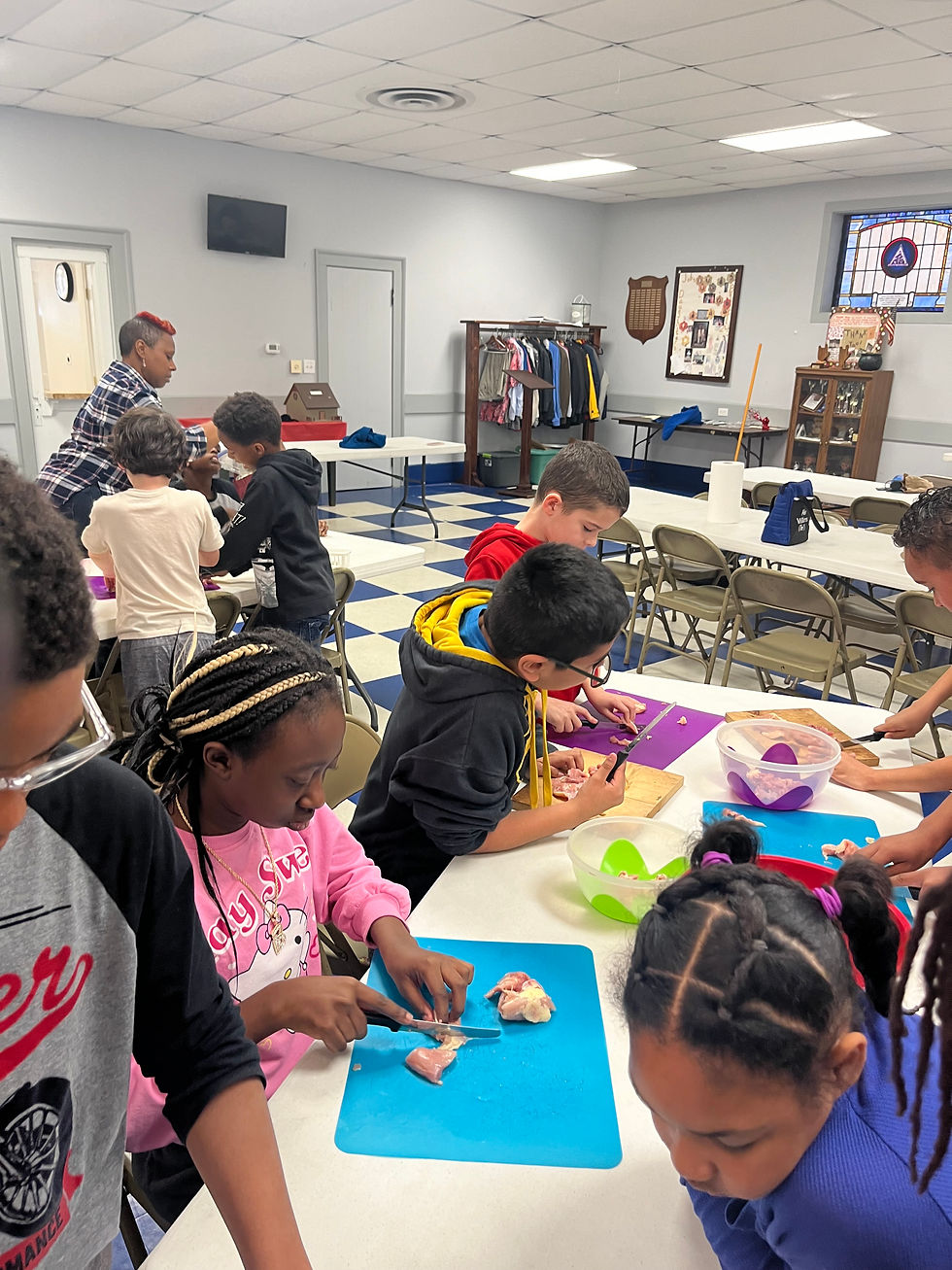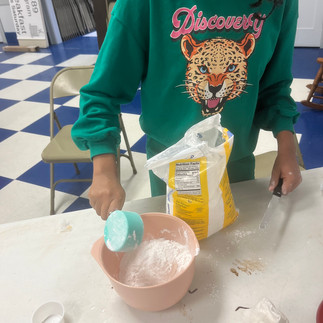Clinical Practice Evaluation 3 Formative Feedback
- marva331
- Mar 25, 2024
- 8 min read
Updated: Apr 1, 2024
Professional Dispositions of Learners
GCU Faculty S

upervisor Cassandra Goodwyn
Mentor: Cassie Shelburne
Standard 1 Student Development
1.1 Teacher candidates create developmentally appropriate instruction that takes into account individual students’ strengths, interests, and needs and enables each student to advance and accelerate his or her learning.
1.2 Teacher candidates collaborate with families, communities, colleagues, and other professionals to promote student growth and development.
Evidence: Mrs. Vargas taught a math lesson to a mixed group of second, third, and fourth graders. The students had to sign up for the class, which was taught during the Spring Intersession. A lesson plan was submitted with the observation link. The students were to estimate and weigh objects to the nearest pound.
Mrs. Vargas began the lesson by showing the students a ruler, a yardstick, and a tape measure. She asked the class to turn to their elbow partner and discuss the three items they had in common. As the students talked to each other, the candidate walked around and listened to their conversations. Then, she gained everyone’s attention and asked the students to report on what they discussed. Mrs. Vargas repeated their answers as the children provided answers so the entire class could hear. She asked questions and expanded on answers. Mrs. Vargas began to discuss estimation. She told them to look at the top part of their thumbs and stated that it was about an inch long. Then, she told the class that if they ever had to estimate the length or the width of something, they could use their thumb for an estimation. Mrs. Vargas discussed the number of inches there are in a ruler and a yardstick and noted there are three feet in a yardstick. The candidate also discussed when they would use a tape ruler and when to use centimeters.
Then, Mrs. Vargas transitioned to the next activity. She told the students they would work on a worksheet where they had to find the estimate and measurement of a student desk, an anchor chart, a window, and the teacher’s desk. The students were to work with a partner on the task. Each student had a ruler. As the students began to work with their partners, the candidate monitored each group. After a reasonable amount of time, Mrs. Vargas called time and asked volunteers to share their estimates and actual measurements for each object. Next, the candidate brought closure to the lesson by asking the students to give her some examples of when to use estimation and when to use measurements.
The candidate used a variety of methods to teach the lesson. These included tangible items used for measurement and a worksheet. Mrs. Vargas consistently asked questions, allowed the students to work with a partner, and asked the students to estimate and measure objects in the classroom. The mentor teacher noted that Mrs. Vargas was featured in an intersession cooking class on the school district’s Instagram page. She was teaching students using hands-on techniques and items.
The mentor teacher stated that Ms. Vargas has worked in different roles in the school for several years. She is currently under contract and serves as a second-grade teacher. The candidate consistently plans with the second-grade teaching team and will work with the school's math and reading resource teachers. She uses her native Spanish speaking and writing skills to strengthen parent-school relationships and to support ELL students in their English language acquisition skills. Ms. Vargas uses the technology the school district offers to plan and deliver her lessons. The candidate regularly communicates with her parents and keeps them abreast of their child’s educational progress. The mentor noted that Mrs. Vargas participated in a school district-sponsored communication/collaboration professional development session. The candidate presented using the jigsaw puzzle method as a teaching strategy.
Standard 2: Learning Differences
2.1 Teacher candidates design, adapt, and deliver instruction to address each student’s diverse learning strengths and needs and create opportunities for students to demonstrate their learning in different ways.
2.2 Teacher candidates incorporate language development tools into planning and instruction, including strategies for making content accessible to English language students and for evaluating and supporting their development of English proficiency.
2.3 Teacher candidates access resources, supports, specialized assistance and services to meet particular learning differences or needs.
Evidence:
The lesson was designed to address various learning modalities, including verbal, auditory, and kinesthetic. Mrs. Vargas often required the students to work in groups and voice their opinions regarding why using measurement is important. She also provided many opportunities for them to use the content vocabulary words, which supports the development of English proficiency.
Standard 3: Learning Environments
3.1 Teacher candidates manage the learning environment to actively and equitably engage students by organizing, allocating, and coordinating the resources of time, space, and students’ attention.
3.2 Teacher candidates communicate verbally and nonverbally in ways that demonstrate respect for and responsiveness to the cultural backgrounds and differing perspectives students bring to the learning environment.
Evidence:
Mrs. Vargas’s communications were appropriate, and she maintained a professional demeanor throughout the observation. The teacher candidate used a moderate tone of voice. The teacher candidate was observed to praise the students often, saying good job and very good. Again, the teacher candidate’s classroom was colorful. Mrs. Vargas used student work and academic posters to cover the classroom walls. The candidate hung student-made projects from the ceiling. Mrs. Vargas appropriately redirected students when warranted and demonstrated respect and responsiveness to the varied cultural backgrounds of the children.
Standard 4: Content Knowledge
4.1 Teacher candidates stimulate student reflection on prior content knowledge, link new concepts to familiar concepts, and make connections to students’ experiences.
4.2 Teacher candidates use supplementary resources and technologies effectively to ensure accessibility and relevance for all students.
4.3 Teacher candidates create opportunities for students to learn, practice, and master academic language in their content area.
Evidence:
The lesson/unit plan contained the learning objectives, vocabulary words, materials used to teach the lesson, worksheets, questions, procedures for activities, procedures for students with disabilities, ELL, early finishers, and homework assignments. The lesson also incorporated a pre-assessment and the assignment detailed assessment outcomes. Mrs. Vargas taught academic vocabulary and provided many opportunities for the children to use the vocabulary words.
Application of Content
5.1 Teacher candidates engage students in applying content knowledge to real-world problems through the lens of interdisciplinary themes (e.g., financial literacy, environmental literacy).
5.2 Teacher candidates facilitate students’ ability to develop diverse social and cultural perspectives that expand their understanding of local and global issues and create novel approaches to solving problems.
Evidence:
Mrs. Vargas asked questions throughout the lesson. She was able to relate concepts of measurement to the children's real world. This assisted the children in understanding the relevance of what they were learning to their environment. The candidate related concepts of how people use estimation and measurement in their daily lives by having the children work with partners and estimate and measure objects in the classroom.
Assessment
6.1 Teacher candidates design assessments that match learning objectives with assessment methods and minimize sources of bias that can distort assessment results.
6.2 Teacher candidates work independently and collaboratively to examine test and other performance data to understand each student’s progress and to guide planning.
6.3 Teacher candidates prepare all students for the demands of particular assessment formats and make appropriate modifications in assessments or testing conditions, especially for students with disabilities and language learning needs.
Evidence:
The mentor noted Ms. Vargas continues to use summative and formative assessment results when she designs her lessons. The candidate can identify the glows and growth from her lessons and self-correct to obtain a more significant percentage of student results. The mentor teacher pointed out that the candidate analyzes the strengths and identifies growth areas for the students in the classroom. The teacher candidate thoroughly plans her lessons with the second-grade teaching team and frequently asks the mentor teacher questions. The mentor stated that Ms. Vargas continues to maximize every opportunity to learn from her colleagues in the building and other teachers on the team.
Planning for Instruction
7.1 Teacher candidates plan how to achieve each student’s learning goals, choosing appropriate strategies and accommodations, resources, and materials to differentiate instruction for individuals and groups of students.
7.2 Teacher candidates develop appropriate sequencing of learning experiences and provide multiple ways to demonstrate knowledge and skill.
7.3 Teacher candidates plan for instruction based on formative and summative assessment data, prior student knowledge, and student interest.
Evidence:
The mentor teacher noted that the candidate's lessons are always completed promptly. Mrs. Vargas chose appropriate strategies, resources, and materials to assist the children in successfully meeting their learning goals. The teacher candidate designed her lesson/unit based on school assessment results. The activities were appropriately sequenced, and her activities provided scaffolding.
Instructional Strategies
8.1 Teacher candidates vary their role in the instructional process (e.g., instructor, facilitator, coach, audience) in relation to the content, purpose of instruction, and student needs.
8.2 Teacher candidates engage students in using a range of learning skills and technology tools to access, interpret, evaluate, and apply information.
8.3 Teacher candidates ask questions to stimulate discussion that serve different purposes (e.g., probing for student understanding, helping students articulate their ideas and thinking processes, stimulating curiosity, and helping students to question).
Evidence:
Mrs. Vargas stated the learning objective at the beginning of the lesson and provided instructions and expectations for each activity during the class. The teacher candidate facilitated and guided the children through each lesson activity. Mrs. Vargas intermittently asked questions about why measurements are important and about tools used to measure objects. Mrs. Vargas’ lesson presentation was clear and concise. She monitored the children as they worked on measuring objects in the classroom and made herself accessible by walking around the room when they discussed what a ruler, yardstick, and tape measure have in common. Mrs. Vargas brought closure to the lesson by asking about critical concepts about estimation and measurement and discussing what they learned during the class. Mrs. Vargas allocated and used an appropriate amount of time for each segment of the lesson.
Professional Learning and Ethical Practice
9.1 Independently and in collaboration with colleagues, teacher candidates use a variety of data (e.g., systematic observation, information about students, and research) to evaluate the outcomes of teaching and learning and to adapt planning and practice.
9.2 Teacher candidates actively seek professional, community, and technological resources, within and outside the school, as supports for analysis, reflection, and problem solving.
Evidence:
Ms. Vargas’ communications with the observer remain professional. The teacher candidate continued to maintain a positive and calm demeanor throughout the observation. The mentor teacher noted that the candidate provides professional education services in a nondiscriminatory manner. The mentor indicated that Ms. Vargas has been in various roles in the school for several years. The candidate continues to maximize every opportunity to learn from her colleagues and will fully participate in professional development sessions offered by the school district. The cooperating teacher noted that Ms. Vargas would follow through on the given tasks. The candidate communicates appropriately with all school staff and interacts with resource professionals ethically. The mentor reported that Mrs. Vargas participated in a school district-sponsored communication/collaboration professional development session. The candidate presented using the jigsaw puzzle method as a teaching strategy. The candidate also had her students participate in a poster exhibition project. An education visitor to the building commented on the work presented by Mrs. Vargas' class and noted the teacher, Mrs. Vargas, went above and beyond with the details of the project. The mentor teacher also stated that Mrs. Vargas was featured in an intersession cooking class on the school district's Instagram page. She was teaching students using hands-on techniques and items.
Leadership and Collaboration
10.1 Teacher candidates use technological tools and a variety of communication strategies to build local and global learning communities that engage students, families, and colleagues.
10.2 Teacher candidates advocate to meet the needs of students, to strengthen the learning environment, and to enact system change.
Evidence:
The mentor reported that Mrs. Vargas participates in school events and spirit days. The candidate uses a variety of communication strategies to support the classroom and school as a learning community. The teacher candidate continues to use the technology equipment and programs the school and district provide.
Strengths:
Ms. Vargas used a variety of methods to teach the lesson. These included working with a partner.
Mrs. Vargas used experiential learning and planned for the physical engagement and manipulation using estimation and measurement. (Nice Job!)
Ms. Vargas appropriately provided praise add, dressed the children, and redirected them when needed.
Ms. Vargas had all the necessary materials before the start of the lesson.
Ms. Vargas made smooth transitions from one activity to the next.
Ms. Vargas consistently monitored her students’ progress.
Mrs. Vargas appropriately used the content vocabulary and planned numerous opportunities for the students to use the content vocabulary.
The appropriate amount of time was allotted for each activity.
Mrs. Vargas’ directions were clear and concise.
Suggestions/ Ideas to Implement:
Continue to use formal and informal assessment data to reteach, enhance, and review curriculum concepts.









Comments